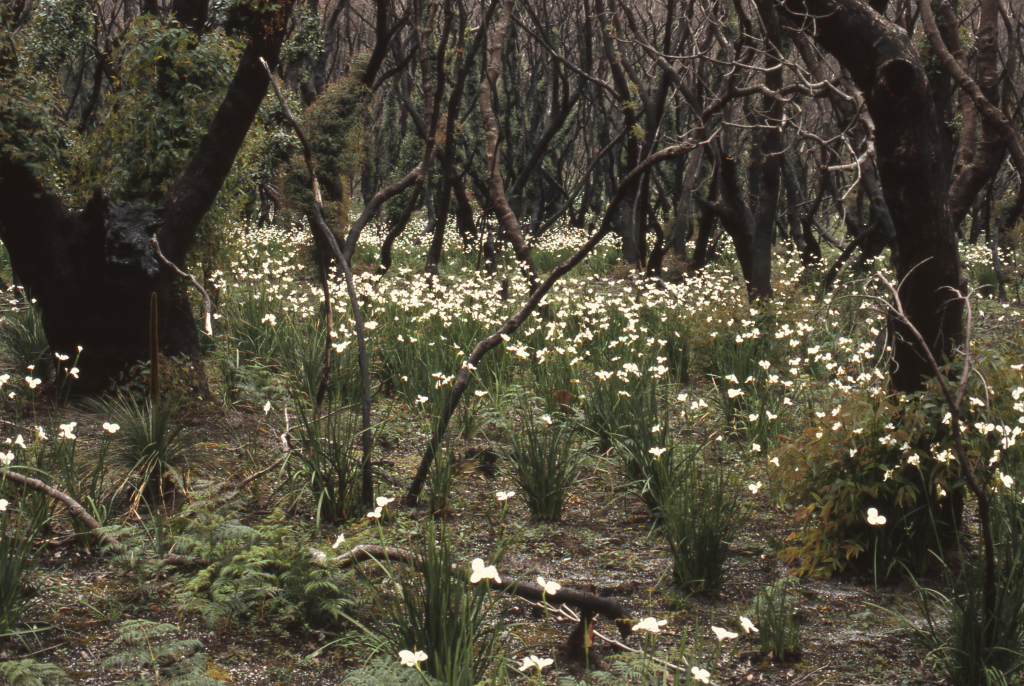Diplarrena moraea
Labill. White IrisLeaves 10–70 cm long, 5–10 mm wide, dark green to slightly glaucous. Inflorescence with scape 20–100 cm long, exceeding leaves. Primary bracts narrowly ovate, subequal, 4–8 cm long, 6–12 mm wide, green, glabrous, prominently veined. Perianth white. Outer perianth lobes broadly obovate distally, slightly concave, 25–35 mm long, c. 15–22 mm wide. Inner perianth lobes narrowly oblong, 20–25 mm long, apex obtuse to retuse, usually purplish or finely purple-veined, often yellow towards apex. Staminal filaments 4–8 mm long; anthers 2–3 mm long. Staminodal filaments 2–4 mm long. Ovary 15–20 mm long; style 12–15 mm long. Capsule cylindric to clavate, triquetrous, 20–25 mm long, c. 7 mm wide; seeds orbicular, c. 3 mm diam., brown. Flowers Oct.–Jan.
VVP, GipP, OtP, WaP, EGL, EGU, WPro, HSF, Strz, MonT, HFE, VAlp. Also NSW, Tas. Occurs in heathlands and open-forest mostly east of Melbourne at low altitudes, but with disjunct occurrences near Mts Useful and Ligar near Licola, and Chapple Vale in the Otway Range. Often shy-flowering except after bushfires.
Conn, B.J. (1994). Iridaceae. In: Walsh, N.G.; Entwisle, T.J., Flora of Victoria Vol. 2, Ferns and Allied Plants, Conifers and Monocotyledons, pp. 686–716. Inkata Press, Melbourne.
 Spinning
Spinning

